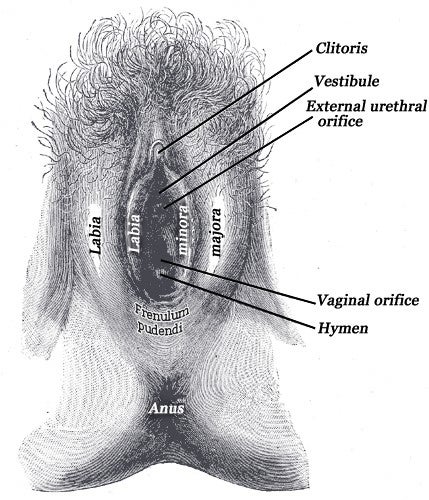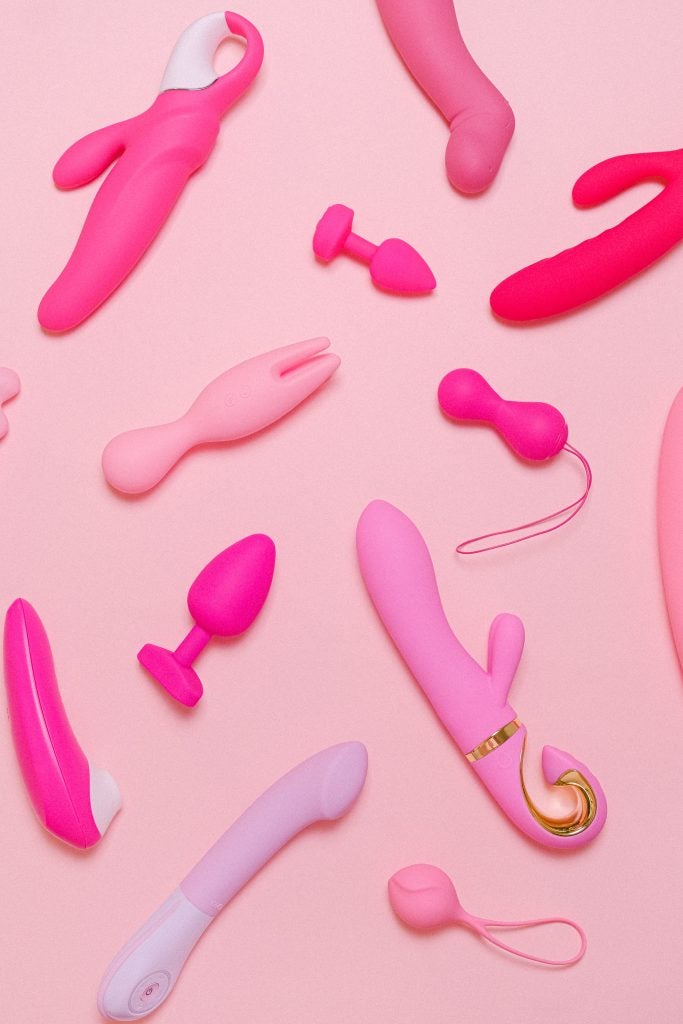
Many females have difficulty reaching orgasm; some females may have never even experienced an orgasm before. The ability to reach orgasm is often a learned skill and may come with time and practice. Experiencing female orgasmic difficulty at any life stage does not mean that a female cannot have a satisfying sex life. There are multiple factors that can affect a female’s ability to achieve an orgasm, many of which can be overcome. With the right steps, females with orgasmic difficulty can overcome this barrier and enjoy a healthy and happy sex life.
Table of Contents
Influences and Causes of Female Orgasmic Difficulty
Understanding the causes and treatments for female orgasmic difficulty is important. There are numerous influences that can lead to orgasmic difficulty. Female orgasmic difficulty can be influenced by cultural factors, individual factors, relationship factors, and physical factors.
Cultural Factors
Culture is an extremely influential factor relating to how a person views sexuality. Negative childhood associations with sexuality can play a major role in sexual performance and understanding.1 Parents, religions, schools, or other authoritative bodies may teach that sex is sinful, genitals are dirty, or that masturbation is wrong, and such ideas are easily internalized at a young age.2 This internalization often results in negative feelings about sex that inhibit a person’s sexual response and may induce embarrassment, fear, and pain, all of which keep stress rather than pleasure at the forefront of the mind.2 To reduce these negative consequences, it is helpful to try to maintain a positive attitude about sex, to believe one can enjoy and deserves pleasure, and to be comfortable with one’s body.
Many societies also establish a “double standard” for men and women, such that men are encouraged to be sexually liberal, with success being related to their sexual prowess and accomplishments.3 Simultaneously and hypocritically, however, the same society may criticize women for being empowered and doing the same, expecting women to be sexually cautious and conservative instead of assertive and active.3 This double standard may prevent some women from being verbally and physically expressive enough to achieve an orgasm.
Some cultures may be more limited in their definition of sex than others. For example, some societies narrowly view sex as only including penile/vaginal (P/V) sex, without consideration of manual stimulation (including focus on the clitoris), oral sex, or anal sex, which all provide different sensations that may lead to orgasm.4 Overall, cultural views on sex and sexuality can greatly influence a person’s ability to achieve orgasm.
Individual Factors
There are several influences of female orgasmic difficulty that relate directly to the individual. Being physically aware of the female reproductive system, including the clitoris, is important for personal and sexual awareness.
Additionally, emotions can play highly into sexuality. Many people experience emotions such as anxiety, stress, and depression in everyday life. Anxiety, stress, and depression can cause a lack of sexual interest and inhibit the sexual response. In a study of females who have sexual difficulties, issues with becoming aroused were reported by about half the participants.5 In addition, more than half of females who had trouble experiencing orgasm faced negative emotions regarding their condition. These distressed females both took longer to reach orgasm and faced higher difficulty experiencing orgasm than other females who were not distressed. These distressed females also reported being less happy in their sexual relationships than females not distressed by the orgasmic disorder.5
Another influence of female orgasmic difficulty may be that of body image and self-esteem. Self-esteem is important for sexuality because being comfortable with one’s body is key to taking an active role in sexual situations, often leading to increased satisfaction.1
Traumatic past experiences of abuse can also have effects on current sexuality. Females who suffer or have suffered from childhood sexual abuse, including incest and molestation, or have been abused as an adult, including those who have experienced sexual violence or rape, may encounter physiological or psychological difficulties related to sexuality.1 While overcoming trauma on one’s own is not always easy or simple, the impacts of abuse can be serious; for this reason, seeking help from a professional or even speaking to a trusted companion may help in overcoming the traumatic experience.
Relationship Factors

Oftentimes, other individuals may aid in causing orgasmic difficulty. Relationships with any sexual partner(s) have influence on arousal, comfort, and pleasure. According to the Journal of Sexual Medicine, increased frequency of vaginal orgasms is found to be associated with higher relationship satisfaction, lower frequency of masturbation, and better sexual compatibility between partners. Sexual satisfaction in males even increases when a partner has more frequent orgasms. A driving force behind this may be communication. Communication provides both partners with an active say in desires and pleasures during lovemaking. Trust, love, desire, attraction, and active engagement with one’s partner(s) are all factors that positively influence the sexual experience.6 However, relationships can still be very meaningful and fulfilling without a sexual relationship or with low sexual desire.
Worries about becoming pregnant or contracting sexually transmitted infections (STIs) can also lead to orgasmic difficulty. Fear and anxiety about pregnancy or STIs can have a negative sexual impact on a person, so it is important to communicate with one’s partner(s) and be aware of the various methods of birth control and protection to reduce these concerns.
A final relationship factor for orgasm difficulty is confusion concerning one’s sexual orientation. Some females find it more sexually, emotionally, and physically fulfilling to be with another female. Sexuality is a broad spectrum. Misunderstanding one’s sexual preferences could be a cause for why some females do not feel sexual satisfaction in a heterosexual relationship.
Physical Factors
Physical factors, such as medications or disabilities, also influence the ability to reach orgasm. Several prescription and non-prescription medications can have strong effects on sexuality and emotions,1 such as antidepressants and hypertension medications. Some medications can cause low sexual desire, prevention of arousal, and a delay or absence of orgasm.1 Chronic illnesses and disabilities may also affect the sexual response.1 If an illness or medication seems to be affecting a female’s ability to achieve orgasm, their doctor should be consulted. Disabilities and medications should not detract from having an active and enjoyable sex life.
Therapy and Enrichment Techniques
There are many therapeutic and enriching techniques that a person and their partner(s) can engage in to help reach orgasm and overcome female orgasmic difficulty. It is very natural to want to achieve an orgasm. However, while utilizing these tips, it is important that the individual focuses on their pleasure and their partner’s pleasure, not the “end goal” of orgasm.

Self-Awareness
One of the most important methods a person can use to overcome difficulties is to be self-aware. One way to be self-aware is to pay attention to internal thoughts and emotions in relation to the surrounding environment. For instance, individuals should be aware of the setting in which they are masturbating or engaging in partnered sexual activity. If it is loud, consider finding a quieter place if possible. Additionally, putting aside plenty of time to practice or sex can help individuals feel less rushed. One study found that mindfulness based therapy may improve sexual functioning both immediately and in a six month follow up. Mindfulness practice focuses on “paying attention, in the present moment, and in a way that cultivates non-judgment.” Judgement of the self and body will not help when taking steps toward overcoming female orgasmic difficulty, and moving past self-judgement can benefit an individual’s sexual function. Sensate focus is another way of practicing mindfulness that can be used alone or with others. The goal of sensate focus is to increase communication between partners and focus on exploring yourself and your partner(s).10
Self-Exploration
Becoming familiar with oneself physically, emotionally, and psychologically is another step that can help one overcome female orgasmic difficulty. Females can examine themselves in detail using a mirror to get as familiar with their genitals as possible. One can cause sexual arousal and watch the changes their genitals undergo during extended masturbation. This way, an individual can more accurately understand their anatomy and observe their physical reactions to arousal over time.

Sex toys such as a vibrators or dildos can be used to increase stimulation. Vibration on the genitals may increase changes of orgasm. One study involving 17 females between the ages of 25 and 55 evaluated the females’ sexual expectations and experiences with the introduction of a vibrator in their sexual activity. This study found that “about half of the women found it considerably easier to reach orgasm, and a similar number found vibrator use to be liberating and empowering.” Furthermore, women were more likely to experience orgasm (both a single orgasm and multiple orgasms) when a variety of sensations and practices were included.11
One specific method for treating female orgasmic difficulty is called the “Betty Dodson Method.” This method tested 500 female subjects with difficulty orgasming and 93% of the subjects were able to orgasm. Coined as a holistic approach and created by leading sexuality expert Betty Dodson, the Betty Dodson Method, also known as the “Rock and Roll Method,” combines the use of a clitoral vibrator, personal lubricant, squeezing of the pelvic floor muscles, hip movements and breath work, and works as follows:
First, the female lays down on their back with their feet flat against the floor, so that their legs are bent. Sexual fantasies are encouraged while the female stimulates with the vibrator and the lubricant. One key part of this method is called “therapeutic energy work,” which involves contracting the pelvic floor muscles and hip movements. Push the pubic bone forward, similar to an upward hip thrust into the air, while tensing and releasing the whole body. At the same time, while moving the pelvic floor muscles and hips, and tensing and releasing, apply a clitoral vibrator—the study used the Hitachi Magic Wand, but any clitoral vibration works—to the vulva. The idea is to not directly apply the vibrator to the clitoris but to brush over it as you thrust your hips upward, hence the “rock and roll” name. Repeating the prolonged masturbation “with variety and diversity” gives the best chances for a “full body orgasm.” 12
Communication With Partner
After one explores themselves on their own, they can try to communicate their preferences to their partner(s). Communication and expression are crucial practices that lead to fulfilling relationships and sexuality.7 Partners can also be included in masturbation to better communicate sexual preferences. Furthermore, “vibrator use, in and of itself, is not associated with sexual satisfaction, but sexual satisfaction is influenced by whether or not one’s partner is aware of their vibrator use.” 11 and support from partners may be more predictive of sexual satisfaction than the use of a vibrator. In one nationally representative survey in the United States, “most men reported belief that a woman’s vibrator use takes the pressure off of them to give their partner an orgasm.” This shows how important communicating what a partner likes and dislikes is essential to increasing satisfaction.11
Introduce Novelty into Sex Life
Novelty can be brought into one’s sex life by introducing something new into sex. This can be done to increase sexual excitement so that sex does not become predictable or routine. Healthy fantasies in one’s sex life during intercourse or masturbation can introduce novelty. Also, it can be beneficial to learn to make oneself more comfortable and aroused during sex, such as by practicing moving the body in new ways during intercourse or trying new masturbation techniques.

Additionally, one can always try new and interesting positions during sex. Keep in mind that other forms of stimulation, such as manual stimulation (with focus on the clitoris), fingering, oral sex (cunnilingus), or anal sex have many benefits as well. For many people with vulvas, penetration alone is not enough to cause orgasm and other forms of stimulation are needed as well. During stimulation, one can try sensate focus to identify key movements, locations, and sensations that help increase arousal. Introducing some “kinkier,” or more unusual, aspects into sex may also help with keeping one’s sex life exciting.
Certain approaches may be more effective for some individuals than others. Some techniques and enrichment may be life-changing, while others may be unhelpful. To figure out what one should do, it is best to first become familiar with oneself. In addition, seeing a therapist or doctor may be a wise path, as professionals will know how to properly diagnose the condition and treat symptoms of female orgasmic difficulty.
Females who encounter an absence or delay of following normal sexual activity and excitement may have a condition called female orgasmic disorder.1 Female orgasmic disorder varies from general orgasmic difficulties in that those who experience female orgasmic disorder may have problems relating to the sexual response cycle that may inhibit their ability to reach orgasm.
The DSM-5 classifies female orgasmic disorder as the presence of any of the following symptoms, experienced during 75% to 100% of sexual activity:
- Marked delay in, marked infrequency of, or absence of orgasm
- Markedly reduced intensity of orgasmic sensations
- Experience of either of the symptoms above as well as meeting these criteria:
- Symptoms have persisted for a minimum duration of approximately 6 months.
- The symptoms cause clinically significant distress in the individual.
- The sexual dysfunction is not better explained by a nonsexual mental disorder or as a consequence of severe relationship distress (partner violence) or other significant stressors and is not attributable to the effects of a substance/medication or another medical condition.9
While there are guidelines, female orgasmic disorder can be unique to each individual experiencing it and there are several different types of female orgasmic disorders, as well as multiple ways to overcome it. Solutions can often be psychologically based, rather than physiologically.
Types of Female Orgasmic Disorder
There are several different types of female orgasmic disorder including the following:
- Pre-orgasmia: a term describing females who have never experienced an orgasm, also known as “lifelong orgasmic disorder” or “primary anorgasmia.”
- Acquired orgasmic disorder: a term describing females who are unable to achieve orgasm despite previously having the ability to reach sexual climax, also known as “secondary anorgasmia.”
- Situational orgasmic disorder: a term for some females in which orgasm can be experienced in some circumstances, such as masturbation, but not in other circumstances, such as stimulation from a partner.
- General anorgasmia: a term for females with the inability to orgasm under any circumstances.1
To fully understand the influences and causes of female orgasmic disorder, as well as therapy and sexual enrichment techniques, it is important to identify the type of orgasmic disorder that the female is experiencing. Additionally, if one believes that they may have female orgasmic disorder, we encourage seeking out help from a medical professional in order to get a proper diagnosis and treatment.
Concluding Remarks
Experiencing an orgasm is not always an easy task for females. Many factors can influence the onset of female orgasmic disorder, including cultural, individual, relationship, and physical factors. Regardless of the causes, treatment and therapy are usually possible. With the right steps, a female can achieve orgasm and overcome female orgasmic disorder.
References
- Krans, Brian. “Orgasmic Dysfunction.” Healthline.com .Web. 1 March 2017.
- Weiss, Robert. “Linking Sexual Shame and Addiction.” Blogs.psychcentral.com. Web. 1 March 2017.
- Kreager, Derek A and Jeremy Staff. “The Sexual Double Standard and Adolescent Peer Acceptance” journal.sagepub.com. Web. 1 March 2017.
- “Understanding Orgasmic Difficulty in Females.” The Journal of Sexual Medicine, Volume 13, Issue 8, 1246-1254. Aug. 2016. Web. 18 Jan 2017.
- Richters, Juliet, Richard de Visser, et all. “Sexual practices at last heterosexual encounter and occurrence of orgasm in a national survey.” Tandfonline.com. Web. 1 March 2017.
- “Understanding Orgasmic Difficulty in Females.” The Journal of Sexual Medicine, Volume 13, Issue 8, 1246-1254. Aug. 2016. Web. 18 Jan 2017.
- Barnes, Zahra. “What Your Orgasms Say About Your Relationship: How often you cross the finish line may give insight into your bond.” Females’s Health Magazine. 18 Nov. 2014. Web. 21 Jan 2017.
- “Relationships and communication:” Betterhealth.vic.gov.au. Web. 1 March 2017.
- “Orgasmic Disorder.” Psychology Today. 07 Feb. 2019.
- Brotto, Lori A, and Rosemary Basson. “Group Mindfulness-based Therapy Significantly Improves Sexual Desire in Women.” Behaviour Research and Therapy Volume 57, Issue 1, 43-54. 08 Apr. 2014.
- Rullo, Jordan E, Tierney Lorenz, Matthew J Ziegelmann, Laura Meihofer, Debra Herbenick, and Stephanie S Faubion. “Genital Vibration for Sexual Function and Enhancement: A Review of Evidence.” Sexual and Relationship Therapy Volume 33, Issue 3, 263-74. 03 July 2018
- Struck, Pia and Søren Ventegodt. “Clinical Holistic Medicine: Teaching Orgasm for Females with Chronic Anorgasmia Using the Betty Dodson Method.” The Scientific World Journal Volume 8, 883-95. 01 Jan. 2008.
Last Updated: 02 June 2020
